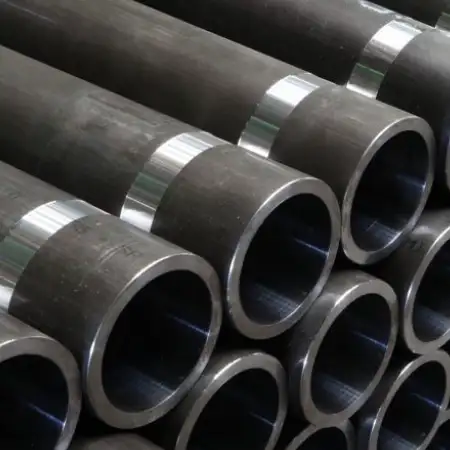In my fifteen years in the pipeline industry, I’ve frequently been asked: “How much does cast iron pipe cost?” It’s a deceptively simple question. In reality, the answer hinges on many interlocking factors—from pipe size and grade to market dynamics and installation complexity.
Key Cost Drivers
Understanding what drives price is crucial. Consider these factors:
-
Diameter and Wall Thickness
-
Larger pipes use more metal.
-
Thicker walls mean higher per-foot cost.
-
-
Material Grade and Coating
-
Standard gray iron vs. ductile iron.
-
Internal linings (e.g., cement mortar) add cost.
-
-
Production Method & Standards
-
ASTM A74 vs. EN545/EN598.
-
Tighter tolerances or certifications can spike prices.
-
-
Market Conditions
-
Global iron ore and energy prices.
-
Freight and logistics fluctuations.
-
-
Quantity & Bulk Discounts
-
Small orders lack leverage.
-
Projects ordering thousands of feet can save substantially.
-
-
Installation Complexity
-
Trench work, bedding, and backfill.
-
Jointing method—push-on, mechanical coupling, flanged.
-
Typical Price Ranges
Below is a ballpark figure of supply-only costs (per linear foot, USD):
| Nominal Size (inch) | Gray Iron Price Range | Ductile Iron Price Range | PVC Equivalent | Steel Equivalent |
|---|---|---|---|---|
| 2″ | $8 – $12 | $12 – $16 | $2 – $3 | $5 – $7 |
| 4″ | $10 – $15 | $15 – $20 | $3 – $4 | $7 – $9 |
| 6″ | $15 – $22 | $22 – $30 | $4 – $6 | $9 – $12 |
| 8″ | $20 – $30 | $30 – $40 | $5 – $7 | $11 – $15 |
| 12″ | $30 – $45 | $45 – $60 | $8 – $12 | $15 – $22 |
Note: These figures exclude shipping, coatings, and installation. Prices can vary by 10–20% regionally.

Comparative Analysis
To give you context, here’s a price comparison for a 4″ line over 1,000 ft:
| Material | Pipe Cost (supply) | Jointing Method | Installation Add-On | Total Estimated Cost |
|---|---|---|---|---|
| Gray Iron | $12,500 | Push-on | $5,000 | $17,500 |
| Ductile Iron | $17,500 | Mechanical Coupling | $6,500 | $24,000 |
| PVC | $3,500 | Solvent Weld | $4,000 | $7,500 |
| Carbon Steel | $9,000 | Welded | $7,000 | $16,000 |
All numbers USD; installation add-on includes trenching, bedding, backfill, and labor.
Case Study: Springfield Municipal Water Main Upgrade
Background:
Springfield, a mid-sized city of 150,000, needed to replace a failing 6″ water main on Elm Street. The original gray iron pipes, installed in the 1950s, were suffering severe corrosion and frequent leaks.
Objectives:
-
Upgrade to modern material with > 100-year design life.
-
Minimize road closure—keep traffic moving.
-
Stay within a $500,000 construction budget.
Solution & Costs:
-
Material Selection
-
Opted for cement-mortar-lined ductile iron (AWWA C104/C105).
-
Enhanced corrosion protection.
-
-
Procurement
-
Ordered 1,500 ft of 6″ ductile iron pipe.
-
Pipe Unit Cost: $25/ft → $37,500 total.
-
-
Installation
-
Used restrained push-on joints to avoid thrust blocks.
-
Trenchless technology (slip-lining) in sections to reduce traffic impact.
-
-
Ancillary Costs
-
Valves, fittings, hydrants: $80,000.
-
Traffic control and pavement restoration: $100,000.
-
Design and permitting: $25,000.
-
-
Outcome
-
Final cost: $245,000.
-
Completed in 45 days (versus 90 days conventional).
-
Zero service disruptions during work hours.
-
Lessons Learned:
-
While unit cost is higher, ductile iron’s longevity and lower maintenance deliver superior lifecycle value.
-
Advanced joint systems can offset thrust block costs and accelerate schedules.
FAQs
Below are five of the most frequently asked questions about cast iron pipe cost.
1. How much does 4-inch cast iron pipe cost per foot?
In my experience, you’re looking at $10 to $15 per foot for gray iron and $15 to $20 for ductile iron. Exact pricing depends on your supplier, coatings, and any ASTM/AWWA certifications required.
2. What factors most influence the cost of cast iron pipe?
Major drivers include pipe diameter, wall thickness (class), material grade, linings, market metal prices, and order quantity. Smaller runs often carry a premium. Logistics—especially overseas shipping—can add 10–25% to supply costs.
3. Is cast iron pipe more expensive than alternatives like PVC or steel?
Yes. Pound for pound, cast iron costs more than PVC and sometimes more than carbon steel. However, cast iron (especially ductile iron) offers superior durability, fire resistance, and lower maintenance, which may yield lifecycle cost savings.
4. Can bulk purchasing significantly reduce costs?
Absolutely. Ordering 5,000 ft or more often nets 10–15% discounts. Suppliers appreciate large, repeat business and are willing to negotiate on both pipe and fittings.
5. How does installation complexity affect overall project cost?
Installation can easily double your supply cost. Factors include trench depth, ground conditions, jointing methods, traffic control, and backup materials. For a typical 4″ line, plan on an installation budget of $4 to $7 per foot if trench conditions are standard.
Conclusion
Answering “How much does cast iron pipe cost?” requires a nuanced approach. While unit prices for gray iron range from $8 to $30 per foot (and $12 to $60 for ductile iron), true project costs depend heavily on installation, logistics, and lifecycle considerations. By adopting the right material grade, leveraging bulk discounts, and choosing efficient jointing methods, you can optimize both upfront and long-term expenditures.
References:
- ASTM A74-20 – Standard Specification for Cast Iron Soil Pipe and Fittings
- AWWA C151 – Ductile-Iron Pipe, Centrifugally Cast, for Water
- AWWA C104 – Cement-Mortar Lining for Ductile-Iron Pipe and Fittings
- EPA – Sustainable Water Infrastructure and Pipe Material Selection
- Wikipedia – Ductile Iron Pipe: Design, Cost, and Lifespan

